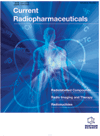
Full text loading...
We use cookies to track usage and preferences.I Understand
A promising material used in radiation synovectomy of small joints is hydroxyapatite, labeled with 177Lu. During the design and production of radiopharmaceuticals, the condition of the radiolabeling process directly influences the radiochemical yield and consequently the quality of the final product so this process necessitates precise optimization.
In this investigation, a central composite design based on response surface methodology and artificial neural networks modeling coupled with genetic algorithm technique is applied to build predictive models and explore key parameters' effect in hydroxyapatite's radiolabeling process with 177Lu radionuclide. The variables that directly affected the labeling reaction were the initial 177Lu radioactivity, pH, radiolabeling reaction time, and temperature.
Based on the validation data set, the statistical values demonstrate that the artificial neural networks model performs better than the response surface methodology model. The artificial neural networks model has a small mean squared error (9.08 artificial neural networks < 12.36 response surface methodology) and a high coefficient of determination (R2: 0.99 artificial neural networks > 0.93 response surface methodology). The optimum conditions to achieve maximum radiochemical yield based on response surface methodology using artificial neural networks modeling coupled with genetic algorithm were at the initial radioactivity of 177Lu radionuclide = 0.082 Gigabecquerel (GBq), pH = 6.75, time= 22 (min), and temperature = 37.8 (℃).
The ability to generate more data with fewer experiments for optimization and improved production is a pertinent advantage of multivariate optimization methods over traditional methods in radiation-related activities. The central composite design and artificial neural network-genetic algorithm optimization approaches are successfully utilized to create prediction models and investigate the impact of critical variables in the radiolabeling of hydroxyapatite with 177Lu radionuclide.

Article metrics loading...

Full text loading...
References


Data & Media loading...

